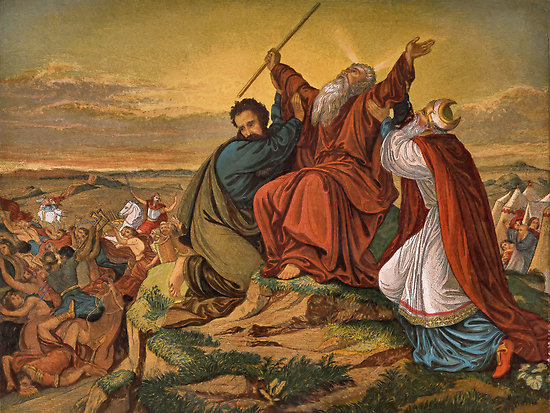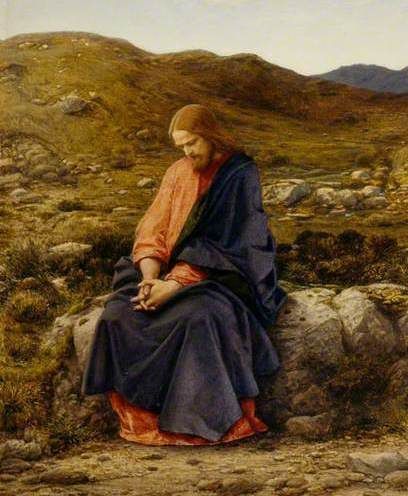Deacon Paul's Homilies

Language scholars who have studied the origins of the word mammon in Hebrew and Aramaic have found clear association with words meaning wealth, riches, money, profit and possessions. But there is also evidence that one of the root words for mammon also means “that in which one trusts.” On all of our US currency — each coin and paper bill — is a simple (and, I suspect, often overlooked) phrase: “In God we trust.” This phrase was added during the Cold War to distinguish our currency, and nation, from that of the atheist Soviet Union. On each of our denominations of currency, both coins and paper bills, we have this simple reminder in whom we should be placing our trust in — God — and not what we should be placing it in: the fruit of our human activity, especially money. It is a poignant reminder to us today in light of the Gospel passage we hear and our current experience. This reminder begs us to ask two questions of ourselves and collectively as a country and society: Do we trust in God first? Always, everywhere, in everything? Or do we place our trust first in small-“g” god, or gods of human origin? In answering those questions, we might ask ourselves, what do our actions say about whether we place our trust first in God, or in humans? Where are we spending our time and treasure? This past month has brought us yet more tragic and traumatic reminders of our society’s misplaced trust. The recent spate of wounding and taking of innocent lives through gun violence in service of an ideology of retribution is just the most recent in a continuing human saga of such behavior, behavior that places trust in leading with human action to resolve differences, over our openness and trust in allowing God to lead us to a conversion of heart and to reconciliation. There is more that could be said about the responsible use of wealth in service to God. About detachment from ‘goods’ of this world — goods that God gives us out of love to draw us closer and more deeply into love with God, that we might revere God and God’s creation, but not take those goods in place of God. But in light of our continuing tragedies and the lack of reverence for human life, created by God in the image and likeness of God, of which they are clear evidence, the most important response we can offer is what St. Paul exhorts us to in his letter to Timothy, when he writes: First of all, I ask that supplications, prayers, petitions, and thanksgivings be offered for everyone, for kings and for all in authority, that we may lead a quiet and tranquil life in all devotion and dignity. This is good and pleasing to God our savior, who wills everyone to be saved and to come to knowledge of the truth. And so we will pray to God, as St Paul asks. Pray collectively for those who have suffered violence in all forms against humanity. We will pray collectively for those wounded, those who have lost their lives and their families. And then perhaps most difficult of all, we will pray for those who perpetrated this violence, and all who are tempted to perpetrate violence against humanity. We should be challenged in our prayers to pray for people we don’t want to pray for. We may find the heart that is converted is our own. In all these prayers we place our trust first and foremost in God, who desires to save us, and who “proves his love for us in that while we were yet sinners Christ died for us” (Rom 5:8). In this is our act of Faith. In this is our act of Hope.
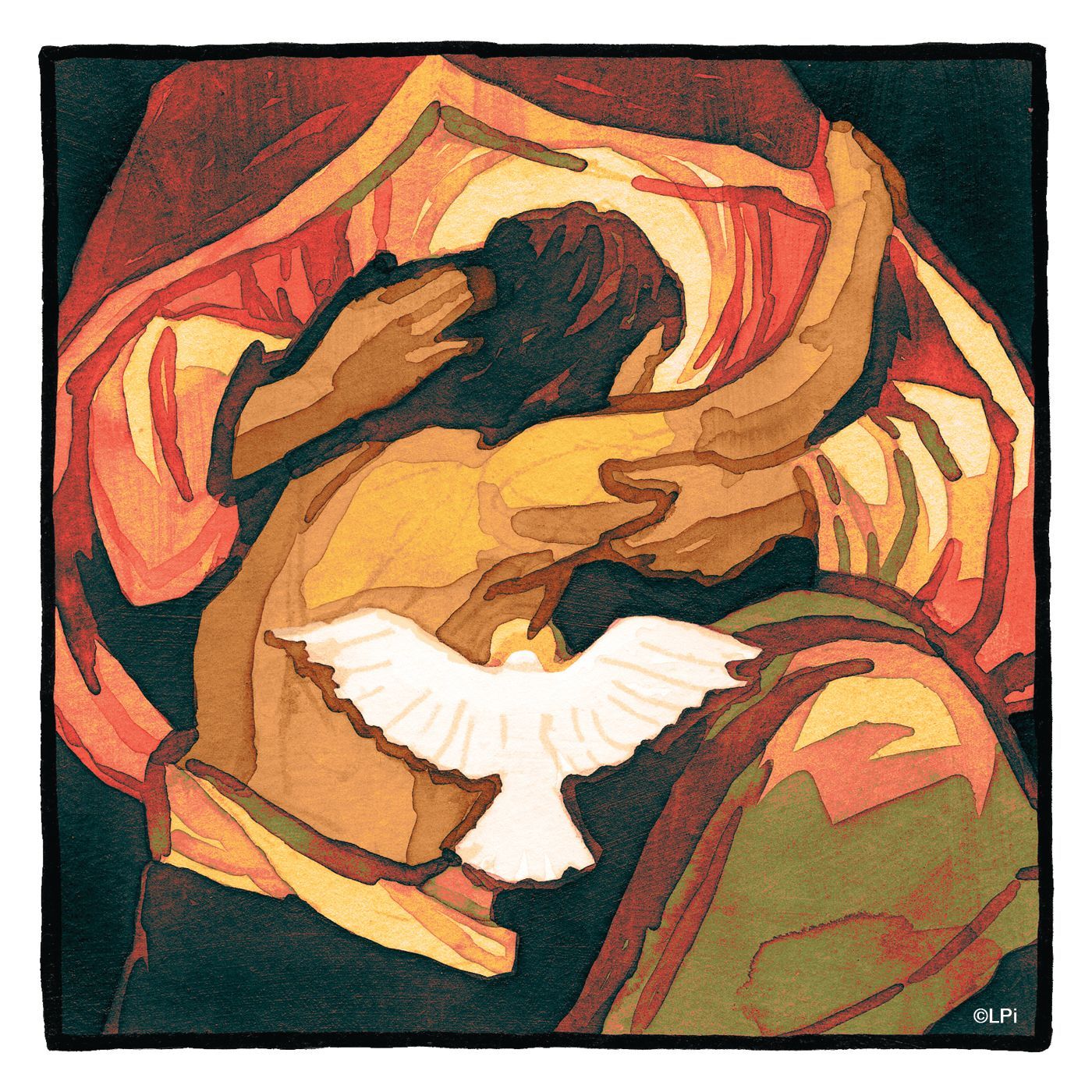
There is a widely-held truth of Christianity that is expressed in the statement, “There is no such thing as being a Christian in isolation.” It has also been expressed as, “There is no such thing as being a solitary Christian.” The fundamental reason that there is no such thing as being a solitary Christian or being Christian in isolation is that God, the God of our Christian faith, is a God of relationship — a God in relationship! That relationship is what we celebrate today in the Solemnity of the Most Holy Trinity: God the Father, God the Son, God the Holy Spirit — one God, three persons — each with unique roles in relationship to one another: God the Creator, God the Redeemer, God the Sanctifier. If, therefore, the God we believe in — the God we profess, the God that we worship and pray to, the God we trust in — is fundamentally a God of and in relationship, it follows that we, who are created in the image and likeness of that God of and in relationship, cannot express what we believe , cannot BE what we profess by being what our God is not: Christians in isolation; solitary Christians. We say that God is Love, and so God is. We sometimes identify the Persons of our Triune God — Father, Son and Holy Spirit — as the Lover, the Beloved, and the Love between them . There is a mutual indwelling of the three persons of the Holy Trinity, and mutual giving and receiving in which each shares and receives all that they are with each other. This expression of love of the Holy Trinity is communion . And it is the highest aim of the Love of God to draw us into the life of love of the Holy Trinity that is that communion. The Church teaches that “the dignity of [humanity] rests above all [emphasis added] on the fact that [we] are called to communion with God” (Catechism #27). That is why today is of such high importance among our days of worship that we deem it a solemnity — The Solemnity of the Most Holy Trinity. Above all , we are called to communion with God. In the first reading we hear that the Wisdom of God, the Holy Spirit, “was poured forth before the earth...playing on the surface of God’s earth” and the Spirit of God says, “ and I found delight in the human race." Our responsorial psalm, Psalm 8, reminds us that we are made “little less than the angels, and crowned with glory and honor.” These verses signal that we are created for communion with our creator. In the second reading St. Paul tells us that “ the love of God has been poured into our hearts through the Holy Spirit.” That sounds like communion, doesn’t it? Indeed, the very incarnation of Christ is the manifestation of our God coming out to us to draw us into the life of the Trinity! Therefore, if we are called into communion with God, then we, as the Body of Christ, are called into communion with each other . The very indwelling-dance of love of the Holy Trinity that we are invited and drawn into, invites — and also urges — that we go out and draw others into this dance of love. That's what the communion of our God does. That's what the love of our God is. The love of God poured into our hearts, as communion with the Holy Trinity, is to be poured forth from our hearts into this world in imitation of our Triune God: in little acts of love as simple as reaching out to make a connection to someone to let them know you were thinking about them, and greater acts of love through service that gather us, feed us, caring for each other in mind, body, and spirit; acts of mercy. For we are not Christians in isolation. And we cannot be Christians in isolation.
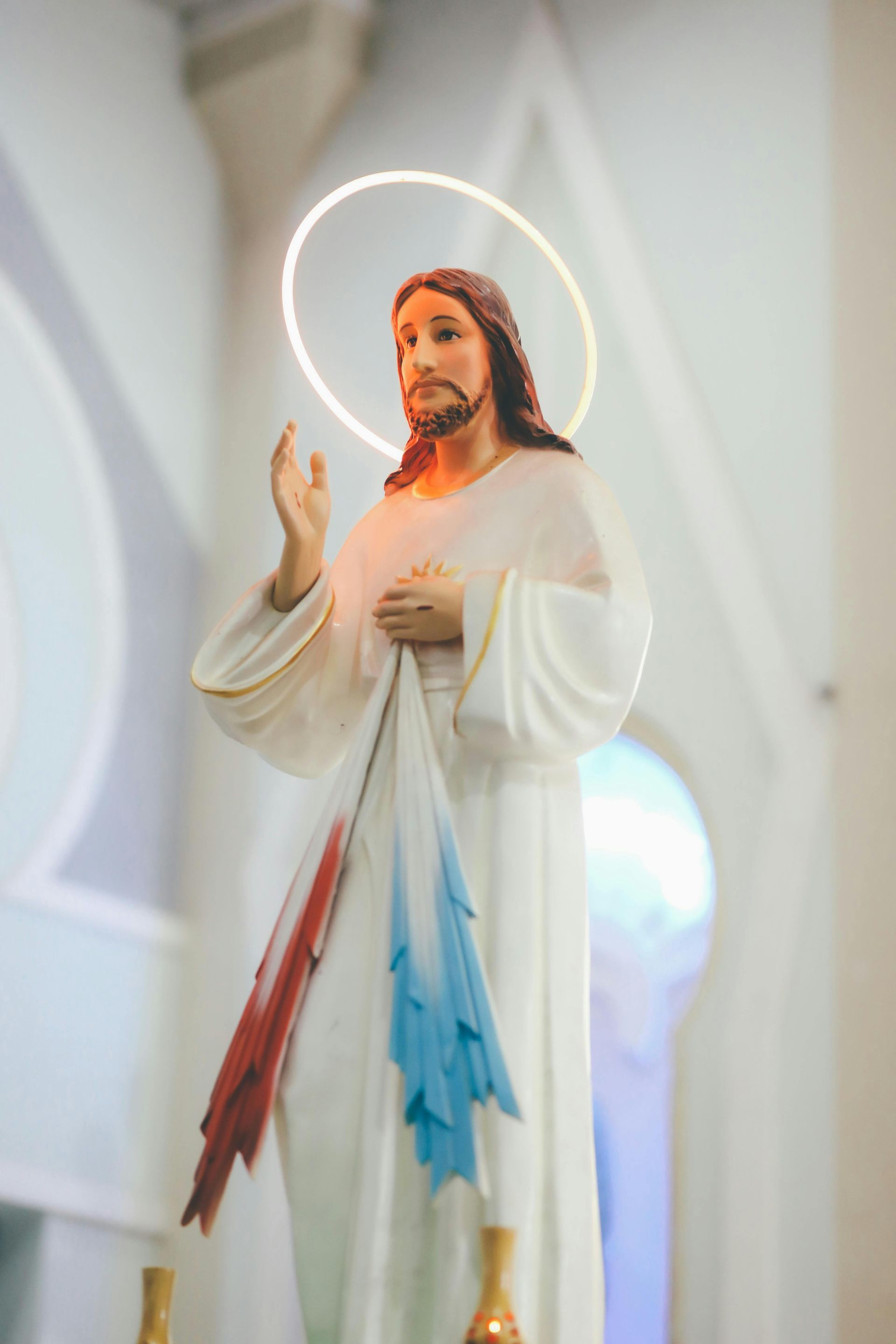
How many of you recall the following hymn refrain? Misericordes sicut Pater Misericordes sicut Pater… It is the refrain from the hymn of the same title that was composed for the Extraordinary Jubilee Year of Mercy, which Pope Francis opened in the first week of Advent in 2015 and concluded with the feast of Christ the King on November 20, 2016. You may recall that throughout that Jubilee Year, we opened our Masses with that hymn and sang that refrain. Misericordes sicut Pater… …Merciful like the Father …Merciful like the Father. How appropriate that on this Sunday, the second Sunday of Easter, Divine Mercy Sunday, is also the weekend in which we have laid our Holy Father Pope Francis to rest, and entrusted him to the tender, eternal mercy of God the Father. It was no coincidence that Pope Francis declared the Extraordinary Jubilee Year of Mercy. Pope Francis believed Mercy is the primary expression and experience of God’s love for us, and Mercy is the primary expression and experience of the love that God calls us to share with each other. So important was his belief and trust in God’s Mercy, that when he was ordained to the order of Bishop, he took as his episcopal motto “ miserando atque eligendo ” ( which roughly translates from Latin as “having mercy, he chose him”). It is taken from a homily written by St. Bede the Venerable, an eighth-century saint and Doctor of the Church, reflecting on the call of St. Matthew by Christ to become an apostle. St. Bede wrote, “[Jesus] saw the tax collector [Matthew] and, because he saw him through the eyes of mercy and chose him, he said to him: Follow me .” So important was his belief and trust in God’s Mercy, that when Francis was elected as Pope, he kept this episcopal motto as his papal motto. This motto expresses so simply and beautifully truths of our faith: God loves us deeply; God expresses that love to us through His mercy for us in our sinfulness; and that despite our sinfulness, God calls us . God calls us to trust and hope in God’s love for us and calls us to express the same love and mercy for one another. That call is reflected also in the Gospel account of Matthew’s call to discipleship by Jesus, which concludes with Jesus challenging the Pharisees, saying “Go and learn the meaning of the words, ‘I desire mercy, not sacrifice'” (Mt. 9:13). Jesus challenges us in the same way. He calls the Pharisees – and us – out of ritual acts of worship and piety that are not also accompanied by acts of mercy! Jesus is clear about this. In the Gospel according to Luke, Jesus says, “Be merciful, just as your Father is merciful” (Lk. 6:36). In his Papal Bull announcing the Extraordinary Year of Mercy, Pope Francis describes God the Father’s mercy for us as like “that of a father or a mother, moved to the very depths out of love for their child…a “visceral” love…gush[ing] forth from the depths naturally, full of tenderness and compassion, indulgence and mercy” (Misericordiae Vultus, no. 6). He also describes God’s Divine Mercy as a ”wellspring of joy, serenity, and peace.” (MV 2). These words bring to mind the visceral atoning sacrifice of Christ on the cross for our sins, when blood and water sprung forth from Christ’s side as the cleansing waters of baptism. It is that visceral sacrifice which we recall in the Divine Mercy chaplet when we pray, “O Blood and Water which gushed forth from the Heart of Jesus as a fount of mercy for us, I trust in You!” It is that cleansing sacrifice that we recall when we pray in the Anima Christi prayer, “Water from the side of Christ, wash me.” And it is that same merciful cleansing in which we hope and trust, as we place all that burdens us into the waters of God’s grace, as we have done here, symbolically, in placing our Lenten stone-burdens in this fountain of Holy Water from the Easter Vigil Baptismal pool. As we contemplate God’s Divine Mercy, we place our trust and our hope in that Divine Mercy, recalling the words our late Holy Father Pope Francis left us with: “Mercy will always be greater than any sin, and no one can place limits on the love of God who is ever ready to forgive” (MV 3); “Mercy [is] the bridge that connects God and man, opening our hearts to the hope of being loved forever” (MV 2). Misericordes sicut Pater Misericordes sicut Pater…
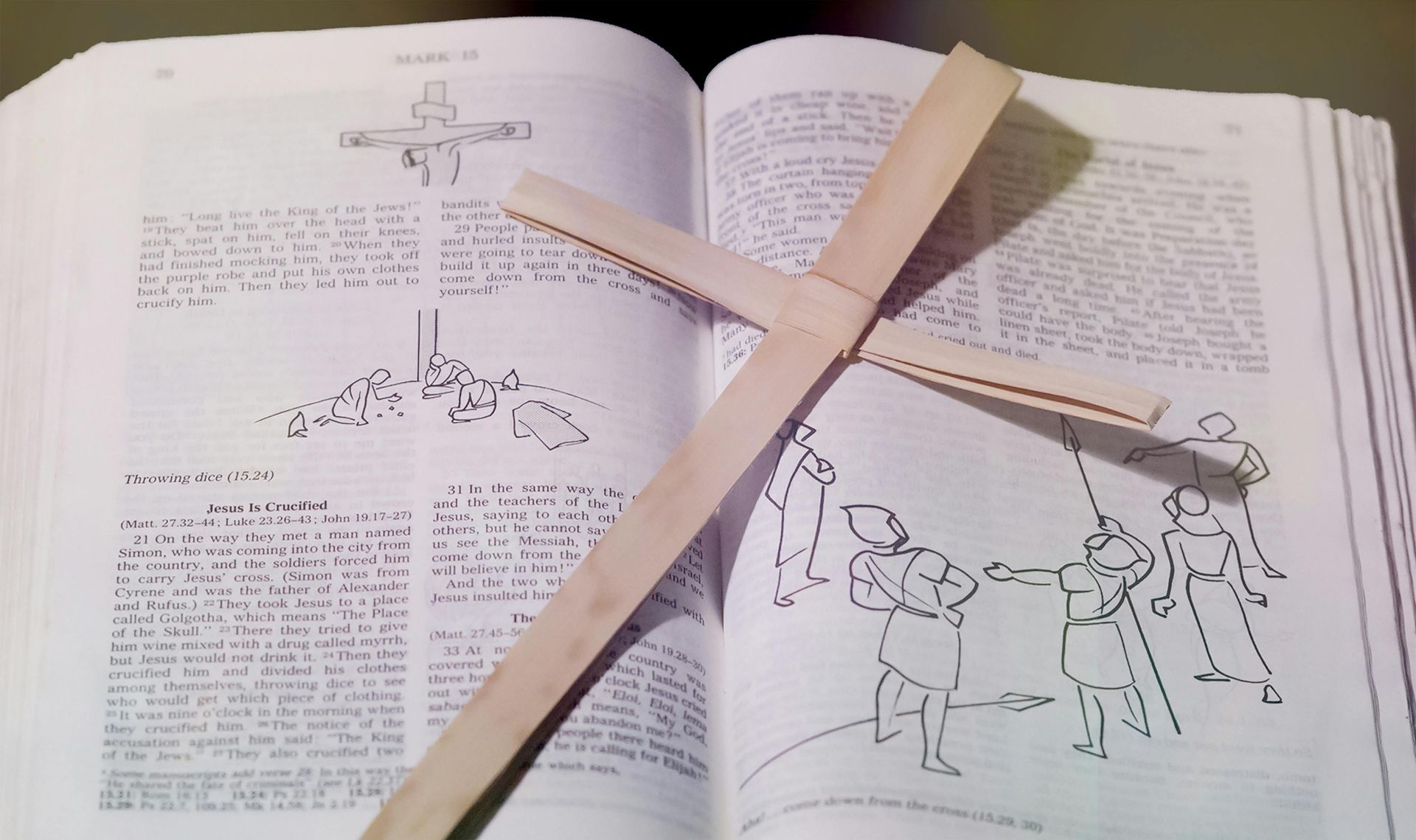
I have long thought that the Church gives us the two Gospel passages we hear today — the account of Jesus’ triumphant entry into Jerusalem and the account of his Passion and death — for very practical reasons: this is the last Sunday before Easter when we will celebrate Christ’s Resurrection and not everyone is able to attend and celebrate the Triduum liturgies during Holy Week. Therefore, the Church places these two critical Gospel passages together so that we hear and experience them in a regular Sunday Mass setting — literally, to ‘fit them in’ before Easter. But there is another equally, if not more, important reason we are to experience these Gospel passages together. And I honestly don’t know if the Church intends this reason or not, but I believe the Holy Spirit intends it. These two Gospel passages remind us as much as any passage that Jesus Christ, while fully Divine, is also fully human. He is like us in all manner except one, in committing sin. He therefore shares with us the experience of the full range of our humanity. In these two Gospel passages we experience Christ moving from triumph to tragedy, from soaring to suffering: the triumphant, soaring entry into Jerusalem and the suffering and tragedy of His Passion and crucifixion. Christ’s human experience is also our human experience, for do not we all experience triumph and tragedy, soaring and suffering? Therefore, we do not have a God and Savior who cannot sympathize with our human experience, but rather one who shares it with us! And we have a God and Savior who not only soared and suffered for us, but soars and suffers with us. Not just two thousand years ago, but right here, right now, in every minute of our lives. For what did Jesus promise? “I am with you always , until the end of time.” (Mt 28:20) When we soar and triumph, Jesus is with us, by our side. And when we suffer and experience tragedy, especially, Jesus is with us, by our side. We are encouraged to give thanks to God in our triumphs and soaring. And we are invited to unite our suffering with Christ’s suffering and offer it up for whatever or whomever is in need. Christ’s suffering was not pointless, and united to His, neither is ours. We offer it up, trust, and hope. Sisters and brothers, that hope comes from our knowledge of the rest of the Gospel story that we will experience with Christ: that His triumph and tragedy, His soaring and suffering does not end in death, but in the glory of Easter Resurrection.
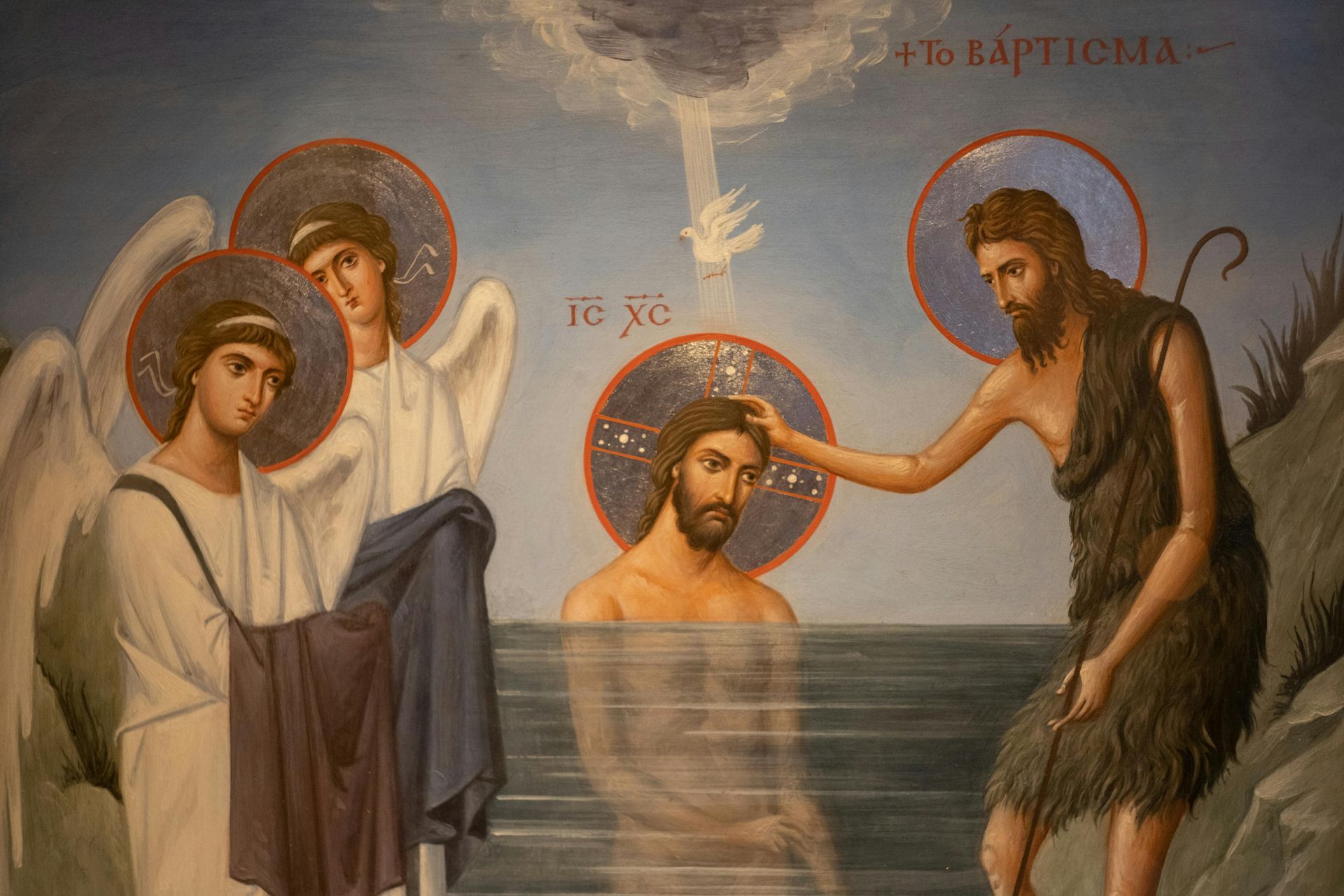
I have a question for you: Did Jesus Christ need to be baptized? Approaching this question academically, knowing that Baptism is one of seven sacraments the Church recognizes, we might begin to answer that by asking, “What is a sacrament?” The classic definition of a sacrament is that it is an outward (that is, a visible) sign, instituted by Christ, to convey God’s grace for our sanctification — to help us grow in holiness. So does it make sense that Jesus Christ would receive a sacrament instituted by himself to convey God’s grace when he is already fully divine — God the Son? Yeah, doesn’t make much sense, does it? And on top of that, if we consider that one of the primary sacramental effects of Baptism is the forgiveness of all sin, both original sin and personal sin, and we consider that Jesus Christ, fully divine and at the same time fully human , is like us in all things except sin, then Christ has no need to be baptized to receive this sacramental effect! So pulling those few strands of logic together, I think we can conclude that Jesus does not need to be baptized for the reasons that you and I need to be baptized! …But does Jesus Christ need to be baptized… for our sake ? That is a different, and interesting, question. Today we hear from Luke’s version of the Baptism narrative, but in Matthew’s version, when John the Baptist questions whether he is worthy to baptize Christ, Jesus says “Allow it now ... to fulfill all righteousness” (Mt 3:15). Considering the definition of a sacrament I gave you a few moments ago — that a sacrament is a visible sign instituted by Christ — some theologians and Church Fathers point to Christ’s own Baptism as that very institution, or at least the beginning of the institution of the Sacrament! By physically entering into the waters of the Jordan, and by extension the waters of all the earth, Christ blesses them and sanctifies them, that they may in turn become the matter of our sanctification in Baptism. Each of the seven Sacraments of the Church has form and matter: the form consists of the words and actions of the sacrament, and the matter is the substance or prerequisite for the sacrament. Water is the matter for the Sacrament of Baptism. So in a manner, Christ needs to be baptized to establish the sacramental matter and form of Baptism for our benefit. He leads the way for us, that we may watch, listen, and follow him, leading the way by having himself baptized. Interestingly, we re-present Christ’s sanctifying entry into the waters of the Jordan at his Baptism at each Easter Vigil before we baptize our adult candidates when we dip the large Paschal candle, the Christ candle, into the waters of the Baptismal font three times — Father, Son, Holy Spirit — Christ again blessing them, making them holy, making them the matter for Baptism, the matter of our sanctification, symbolic of our cleansing from sin through Christ. There is another connection to the waters of Baptism and the sacramental effects of Baptism that is pointed to in the imagery of Luke’s Gospel we heard today: it is the descent of the Holy Spirit from heaven “… like a dove .” The dove reminds us of the action of the Holy Spirit, literally the breath of God upon the waters of the earth at the dawn of creation, bringing forth new life. The Holy Spirit descends upon Christ, revealing him as the new creation of humanity. Jesus Christ — God the Son, the Word of God — became flesh, became one of us, that we might become a new creation in Him . In Baptism we die to our old human nature of sin and its consequences that lead to perpetual separation from God and one another. In the waters of Baptism we are united to Christ’s death, with our sins washed and buried in the waters of Baptism. And from the birth-waters of Baptism we rise with Christ, sharing in His Resurrection to new life, united to Christ forever, sharing in Christ’s divine nature. We invoke this symbolism, and our faith, not only at each Baptism, but each time we bless ourselves with holy water, and at each funeral, when we sprinkle the casket or urn with holy water and pray: “In the waters of Baptism [person] died with Christ and rose with Him to new life. May he/she now share with Christ eternal glory.” We symbolize this new creation we have become through Baptism with the white garment that is donned following the Baptismal rite. Infants are traditionally dressed in white outfits. Here at St. Mary’s, we use white garments for infants, hand-made by parishioners, itself beautifully symbolic of the child joining and being welcomed by our parish Christian community. Baptized adults don a white alb, similar to what Fr. Chris and I wear under our vestments. The white garment is symbolic of the newly-Baptized having put on Christ and risen with him. St. Gregory Nazianzus, a fourth-century bishop and Doctor of the Church, also taught that the white clothing of Christ also veils our shame, the wound of our sin. Baptized and resurrected with Christ, the sin is gone, but we bear the scars, just as the Resurrected Christ bore the wounds of His crucifixion. God’s rich love and mercy are poured out upon us as salvation and grace through the Holy Trinity in the Sacrament of Baptism. There is nothing we do to merit or earn this salvation: it is God’s free gift, poured out upon us. This is what St. Paul spoke of in his letter to Titus: …not because of any righteous deeds we had done but because of his mercy, He saved us through the bath of rebirth and renewal by the Holy Spirit, whom he richly poured out on us through Jesus Christ our savior. (Titus 3:5-6) We are only called to seek, accept, and cooperate with God’s grace in leading a holy life. In Baptism we are incorporated into Christ and configured to Christ, marked with an indelible spiritual mark upon our soul, that claims us as belonging to Christ. And once we have been claimed by Christ, we can never be unclaimed.
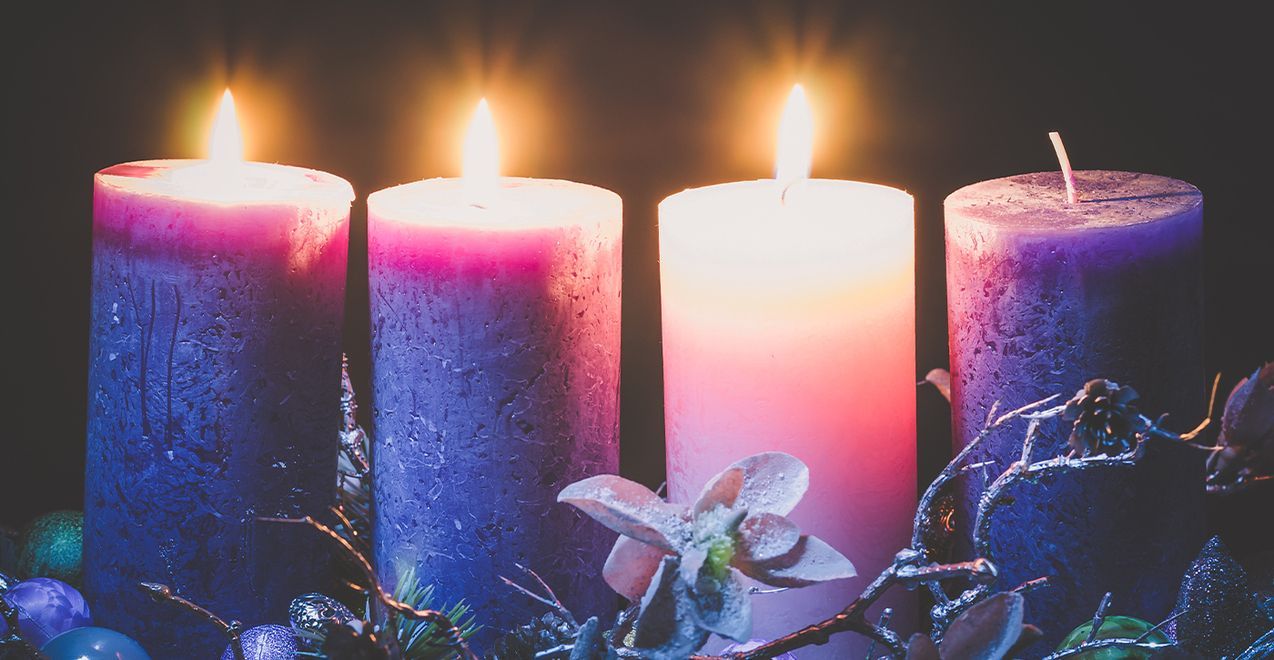
Okay, so I need to address the pink elephant in the room — you all are thinking Fr. Chris and I are wearing pink vestments today! They are not pink, but technically, liturgically speaking, they are Rose. There is a church joke out there that will forever help you honor this subtle, but important distinction: these vestments are rose-colored because Jesus “rose” from the dead, he did not “pink” from the dead! But seriously, in the Church, the liturgical colors are important; they have meaning. Today, the third Sunday of Advent, is known as Gaudete Sunday. Gaudete means “Rejoice” in Latin. We rejoice because of the imminent coming of our Lord, who literally births into our world like a flower blooming, bursting forth amidst a desert of thorns…like a rose! The rose color reminds us of this truth and that we should rejoice at the Lord’s bursting forth into our lives amidst the desert of thorns we perceive and experience in our own lives — thorns that sometimes scratch us, wound us, hurt us. Yet that beautiful, fragrant bloom comes amidst those thorns, amidst our hurt — just as our God does. The liturgical color scheme of Advent (and Lent as well) reminds us of this truth. The purple color — technically violet — is a penitential color. I always tell the servers, “ P urple ribbon for P enitential Act!” Advent, like Lent, is a penitential season. We reflect on our fallen nature, our wounded state during this season, not in an unhealthy, perseverative “I am unworthy” way, but rather in a contemplative way that leads us to awareness of how we have hurt others and ourselves and caused separation and division — a way of spiritual growth that leads us in humility to reconciliation with God and one another, drawing us into a communion of love with God and one another. So the Church chooses the somber violet color to remind and invite us into a somber reflection of our fallen humanity, of our wounded and wounding nature, not to lead us there and leave us there, but in point of fact to lead us out of there through our salvation and redemption in Christ. Something to be hopeful for, something to look forward to, something to anticipate — to anticipate, as we do in this season of Advent, the coming of Christ our Lord! You see, violet is also a color of royalty; so the violet of Advent anticipates the coming of Christ our King! This Rose color we choose today is a reminder of Christ's imminent arrival, his about-to-burst-forth, blooming into our lives. Fr. Hyacinth Cordell, a Dominican priest, has described the rose color as “violet approaching white.” The pure white is the light of Christ coming into the world. As Fr. Cordell writes, the Rose color anticipates the pure white of the Birth and Resurrection of Christ. A birth and resurrection we are invited to participate in over and over again, with every Baptism, with every Reconciliation, with every Eucharist, with every act of love. Indeed, what’s not to be joyful about? And the Rose color of the Advent candle, the Rose color of these vestments, proclaim that Joy! But I know; I get it. Most of us are not capital J-O-Y-Joyful! In fact, we often struggle to be lower-case j-o-y-joyful amidst the thorny thickets of daily life that reach out and grab us, hook us, wounding us and distracting us — obfuscating our path and experience of joy. This is real. How do we find joy in the midst of this reality? First, maintain our faith and hope in Christ the Light, despite all that is going on around us, recalling that he illuminates the darkness and conquers all of the trials of this life. Secondly, enter into and become the Light of Christ. Bear the Light of Christ to each other. Reach out to one another, serve one another; give to one another and do not expect anything in return. In bearing the light of Christ to one another, we will find the Joy of Christ blossoming in our lives. Sometimes the best therapy is to go help someone else. The Gospel passage heard today reminds us of this: Share your cloak and food with the person who has none… Stop collecting more than what is prescribed… Do not practice extortion or falsely accuse anyone… Be satisfied with your wages… Sisters and brothers, remember the simple act of reaching out to someone you know or a stranger with a simple work or deed of kindness can have the profound effect of imparting the Light of Christ, and joy, abiding joy to both them and us, in whatever darkness we may be experiencing. Never underestimate that. A story that Saint Mother Teresa of Kolkata told reminds of this truth. She writes: I will never forget the first time I came to Bourke [Australia] and visited with the sisters. We went to the outskirts of Bourke. There was a big reserv[ation] where all of the Aborigines were living in those little small shacks made of tin and old cardboard ... I entered one of those [little shacks] but it was only one room, and inside the room everything .... I told the man living there, “Please let me make your bed, to wash your clothes, to clean your room.” And he kept saying “I’m alright, I’m alright.” And I said to him, “But you will be more alright if you allow me to do it.” [Finally] he allowed me… After I cleaned the room I found in the corner of the room a big lamp full of dirt and I said, “Don’t you light this lamp, such a beautiful lamp[?]. Don’t you light it?” He replied, “For whom? Months and months nobody has ever come to me. For whom will I light it?” So I said, “Won’t you light it if the Sisters come to you?” And he said “Yes.” So the sisters started going to him for only about 5 to 10 minutes a day, but they started lighting that lamp. After some time he got in the habit of lighting [the lamp]. Slowly, slowly, slowly the Sisters stopped going to him. I forgot completely about that, and after two years he sent word — “Tell Mother, my friend, the light she lit in my life is still burning.”



